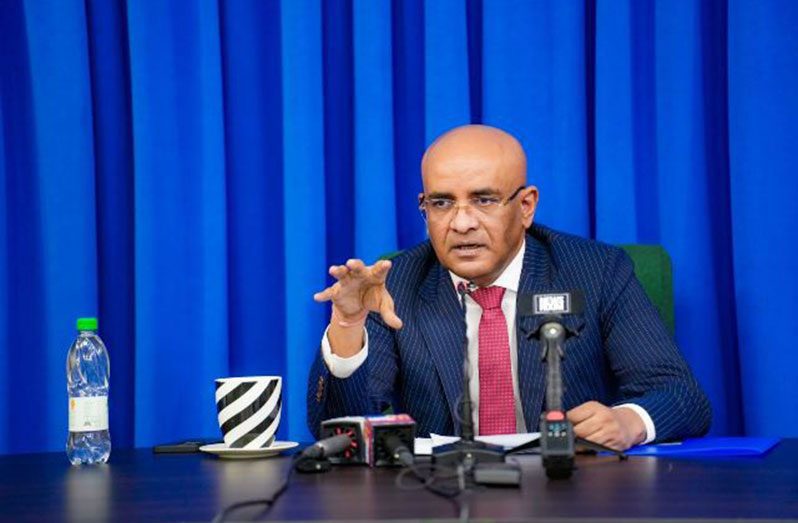–Dr Jagdeo says, highlights avenues being pursued to address problems created under APNU+AFC
WHILE the current situation with the Guyana Power and Light Incorporated (GPL) is “bad,” People’s Progressive Party (PPP) General Secretary, Dr Bharrat Jagdeo has said that the government is exploring all avenues to address the problems created under the APNU+AFC administration from 2015-2020.
Despite occupying the seat of government for five years, the coalition failed to replace old equipment and make tangible investments in GPL.
“Now the situation is bad. There is no sugarcoating this. We have a situation at GPL that we’ve explained 100 times before, but often explanations don’t suite people when the light goes off, because it disrupts their lifestyle, it disrupts their normal activities,” Dr Jagdeo said, while underscoring that he understands the frustration of Guyanese.
The General Secretary, during a press conference at Freedom House, highlighted that a major opportunity was lost under the APNU+AFC coalition when they shelved the Amaila Falls Hydro Project (AFHP), which was supposed to come on stream in 2017.
He also noted that, at this time, peak demand is above installed capacity and most of the equipment was bought by the PPP over the years. Dr Jagdeo further remarked that the plan of the PPP was to have Amaila Falls come on stream, replace the outdated equipment and put them into a reserve.
The Government of Guyana had previously invited Revised Requests for Proposals (RFP) under a Build-Own Operate-Transfer (BOOT) model for the AFHP.
The AFHP was first identified in 1976 by the Canadian company “Monenco” during an extensive survey of hydroelectric power potential in Guyana. Various studies have since justified and strongly supported the construction of the AFHP.
Furthermore, as it relates to what the government is doing currently, he said: “Right now, we are looking to buy maybe another 40 to 80 megawatts of power. We are already in the process of doing this. We will have it for two years until the Gas to Energy project comes.”
With the gas-to-energy project in the West Bank Demerara expected to come on stream by next year, an additional 300 megawatts (MW) is anticipated to be added to the national grid.
The Gas-to-Energy Project will see a 200km 12-inch diameter pipeline channeling natural gas from the Liza Phase One and Liza Phase Two Floating, Production, Storage, and Offloading (FPSO) vessels to a power plant and Natural Gas Liquids (NGL) facility that will be built in Wales.
ExxonMobil’s local affiliate, Esso Exploration and Production Guyana Limited (EEPGL), the operator in the Stabroek Block, and its co-venturers are constructing the pipeline.
That pipeline will be landing on the West Coast Demerara shore, and continue approximately 25 kilometres to the NGL and power-plant facilities.
In December 2022, the Government of Guyana and US-based integrated energy solutions group, LINDSAYCA, in partnership with a local firm – CH4 Group – signed a US$759 million contract for the construction of the power plant and NGL facilities.
The conversion of natural gas from ExxonMobil’s offshore operations to electricity is a key component of the PPP/C government’s objective to lower energy costs by at least 50 per cent through an energy mix, which incorporates gas, solar, wind, and “hydro” power.
Dr Jagdeo went on to explain how investments are being made in solar power projects, in order to give Guyana a varied mix of electricity sources.
“We are fixing the T&D [transmission and distribution] systems, and we are going back to Amaila because we want to have a different energy mix and a cleaner source of energy. We are putting in 35 megawatts of solar panels now,” he said.




.jpg)










